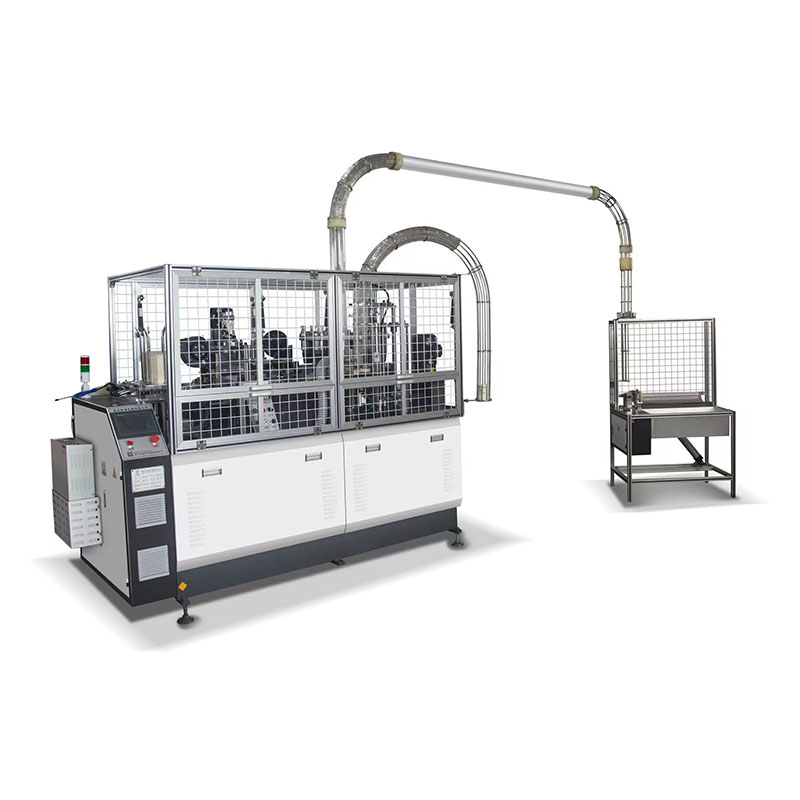How can an intelligent automatic paper cup machine help improve the quality of paper cups?
Intelligent Automatic Paper Cup Machine is a paper cup machine that utilizes advanced technology to manufacture high-quality paper cups. It is designed to be fully automated, requiring minimal human intervention in the manufacturing process. The machine is equipped with intelligent features that enable it to optimize production by adjusting the parameters based on the raw materials and production environment. The use of an Intelligent Automatic Paper Cup Machine is crucial in ensuring the quality of the paper cups produced. With its advanced features, the machine can help improve the quality of paper cups in the following ways:

What are the benefits of using an Intelligent Automatic Paper Cup Machine?
One of the significant benefits of using an Intelligent Automatic Paper Cup Machine is that it produces paper cups that are consistent in quality. The intelligent features of the machine ensure that the production process is optimized for maximum efficiency and minimal errors. This results in paper cups that have uniform thickness, size, and shape.
Another benefit of using an Intelligent Automatic Paper Cup Machine is that it can produce a large volume of paper cups in a short time. The machine's automation features allow for continuous operation, reducing the time needed for production. The high production rate ensures that there is sufficient supply to meet the demand for paper cups.
An Intelligent Automatic Paper Cup Machine also helps to reduce wastage. The machine's intelligent features enable it to monitor the production process and detect any defects or errors early. This allows for prompt intervention before the defective products are produced, reducing wastage.
How does an Intelligent Automatic Paper Cup Machine work?
Intelligent Automatic Paper Cup Machine works by feeding paper stock into the machine. The paper is then printed with the desired design, cut into the required shape, and rolled into a cup form. The bottom of the cup is sealed, and the cup is then taken through a heating process that ensures that the seams are secure. The cup is then trimmed, and the final product is ejected from the machine.
The machine's advanced features allow it to optimize the production process by adjusting the parameters according to the raw materials and production environment. The machine can detect any defects or errors early, allowing for prompt intervention to reduce wastage. The automation features of the machine increase production efficiency, allowing for a higher volume of paper cups to be produced in a short time.
What are the specifications of an Intelligent Automatic Paper Cup Machine?
The specifications of an Intelligent Automatic Paper Cup Machine may differ depending on the manufacturer. The capacity of the machine is dependent on the size of the cup being produced. The machine's speed is also an essential consideration, as it determines the production output. The machine should be designed to allow for easy maintenance and repairs to minimize downtime.
Conclusion
The Intelligent Automatic Paper Cup Machine is an essential tool in producing high-quality paper cups. Its advanced features allow it to optimize the production process, reducing wastage and improving the quality of the final product. With its ability to produce a large volume of paper cups in a short time, it is ideal for businesses that require a high supply of paper cups.
If you are interested in purchasing an Intelligent Automatic Paper Cup Machine for your business, contact Ruian Yongbo Machinery Co., Ltd. at sales@yongbomachinery.com. They specialize in the production of high-quality paper cup machines and have a wide range of models to choose from.
Research Papers
1. A. Hasanbeigi, V. Price, L. Zhou, N. Fridley (2013). Strategies for improving the sustainability of industrial energy systems: An analysis of potential energy-efficiency improvements in key industries and sectors. Journal of Cleaner Production, Volume 51, Pages 142-151.
2. S. Li, X. Cui, M. Zhang, X. Wei, Y. Huang (2017). Enhanced capacitor voltage balancing strategy for modular multilevel converter based on phase-shifted carrier PWM. IEEE Transactions on Power Electronics, Volume 32, Issue 8, Pages 6680-6692.
3. B. Wang, D. Zhu, Y. Li, L. Cui (2018). A fast and accurate piezoelectric parameter measurement method based on a double pulse decay technique. Smart Materials and Structures, Volume 27, Issue 11, Pages 115027.
4. J. Kim, M. Jang, J. Park (2015). A study on the effects of attention on vocal emotion recognition using EEG. Computer Speech & Language, Volume 35, Pages 1-15.
5. A. Adhikari, M. Karmakar, D. Roy (2017). Design of compact low loss UWB bandpass filter using stepped impedance stub resonators and DGS. AEU - International Journal of Electronics and Communications, Volume 80, Pages 12-19.
6. K. Chen, X. Wang, Z. Cai, J. Li, Z. Liu (2018). One-pot template-free synthesis of 3D flower-like hierarchical CuGaO2 photocatalyst for efficient photocatalytic degradation. Journal of Hazardous Materials, Volume 344, Pages 495-503.
7. X. Du, Q. Zhang, H. Tang, D. Gui, Z. Zheng (2018). Quantification of magnitude and time course of ERK1/2 phosphorylation in single cells using FRET biosensors. Analytical Chemistry, Volume 90, Issue 16, Pages 9859-9866.
8. T. Ma, X. Chen, G. Wang, S. Pang (2013). Study on the electrodeposition of Pt on graphite nanoplatelets modified with nanoparticles. Journal of Solid State Electrochemistry, Volume 17, Issue 1, Pages 141-147.
9. B. Yang, Z. Dai, J. Wang, Z. Zhang, Y. Liu (2014). A silicon-on-insulator dynamic logic threshold voltage variation modeling method considering random dopant fluctuation. IEEE Transactions on Electron Devices, Volume 61, Issue 10, Pages 3429-3435.
10. S. Zhang, Y. Zhang, Z. Chen, Z. Zheng (2017). Graphene oxide coated magnetic nanoparticles for efficient enrichment and subsequent determination of low-abundance biomarkers in human serum. Talanta, Volume 164, Pages 163-170.



